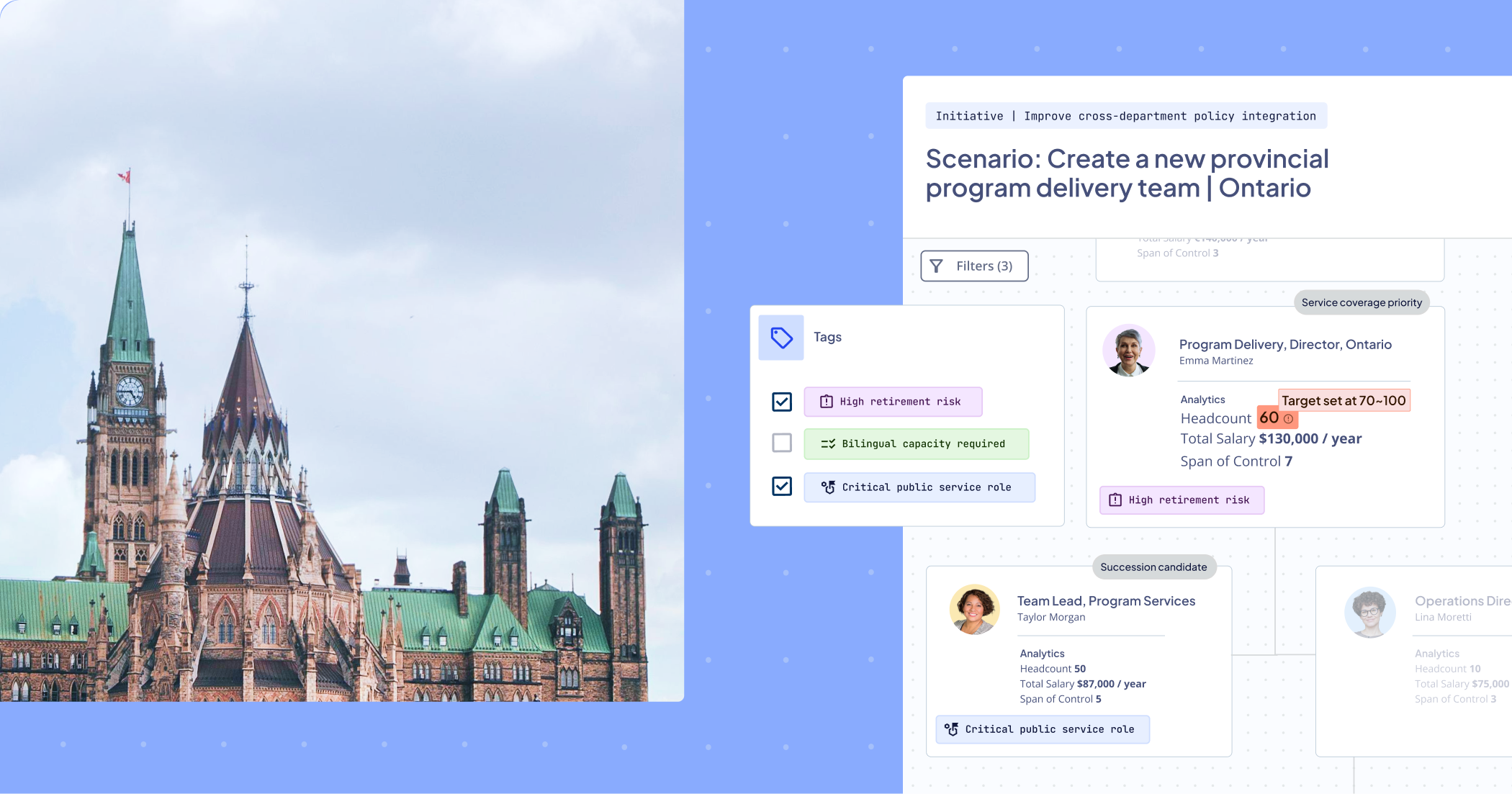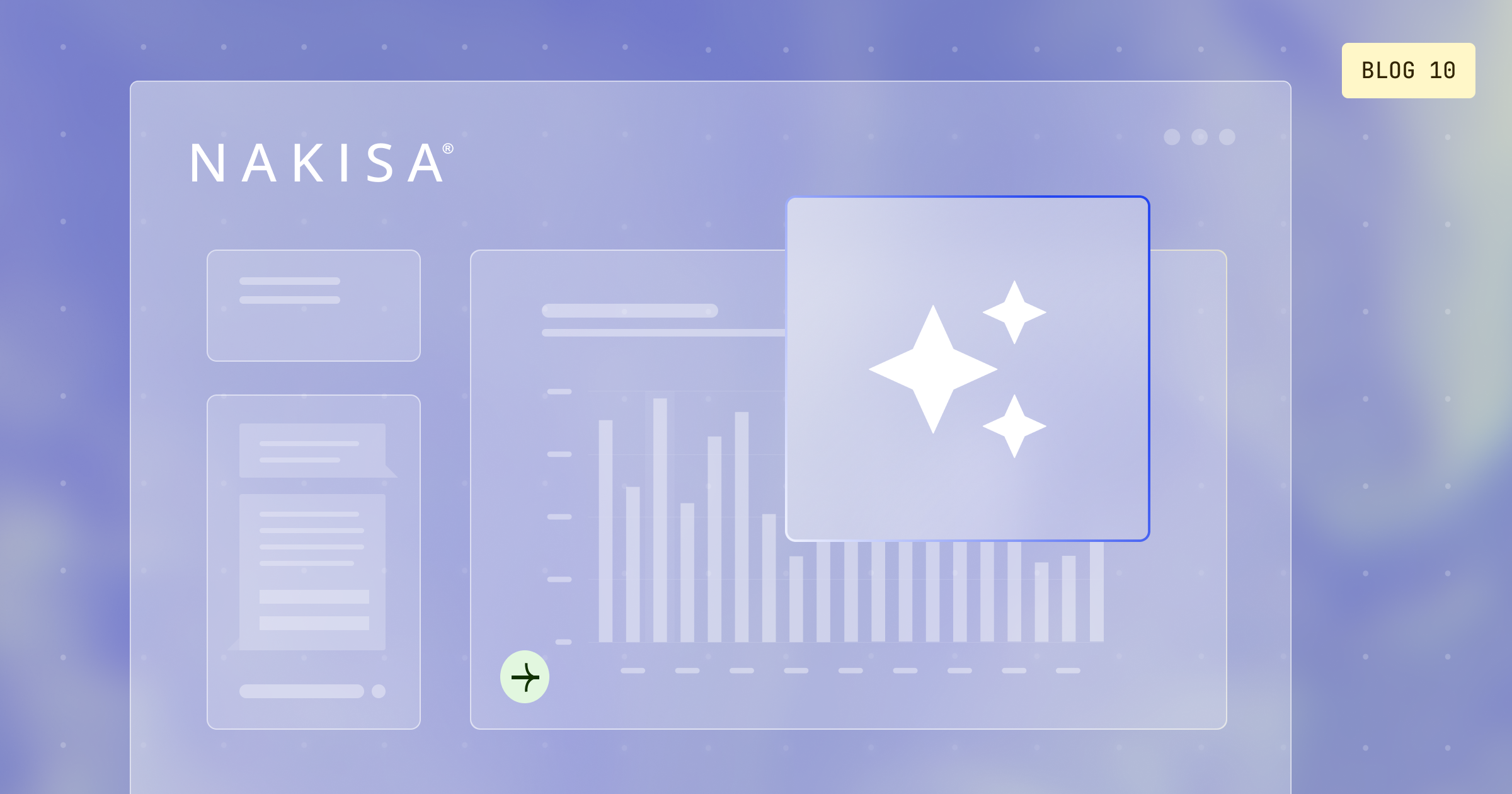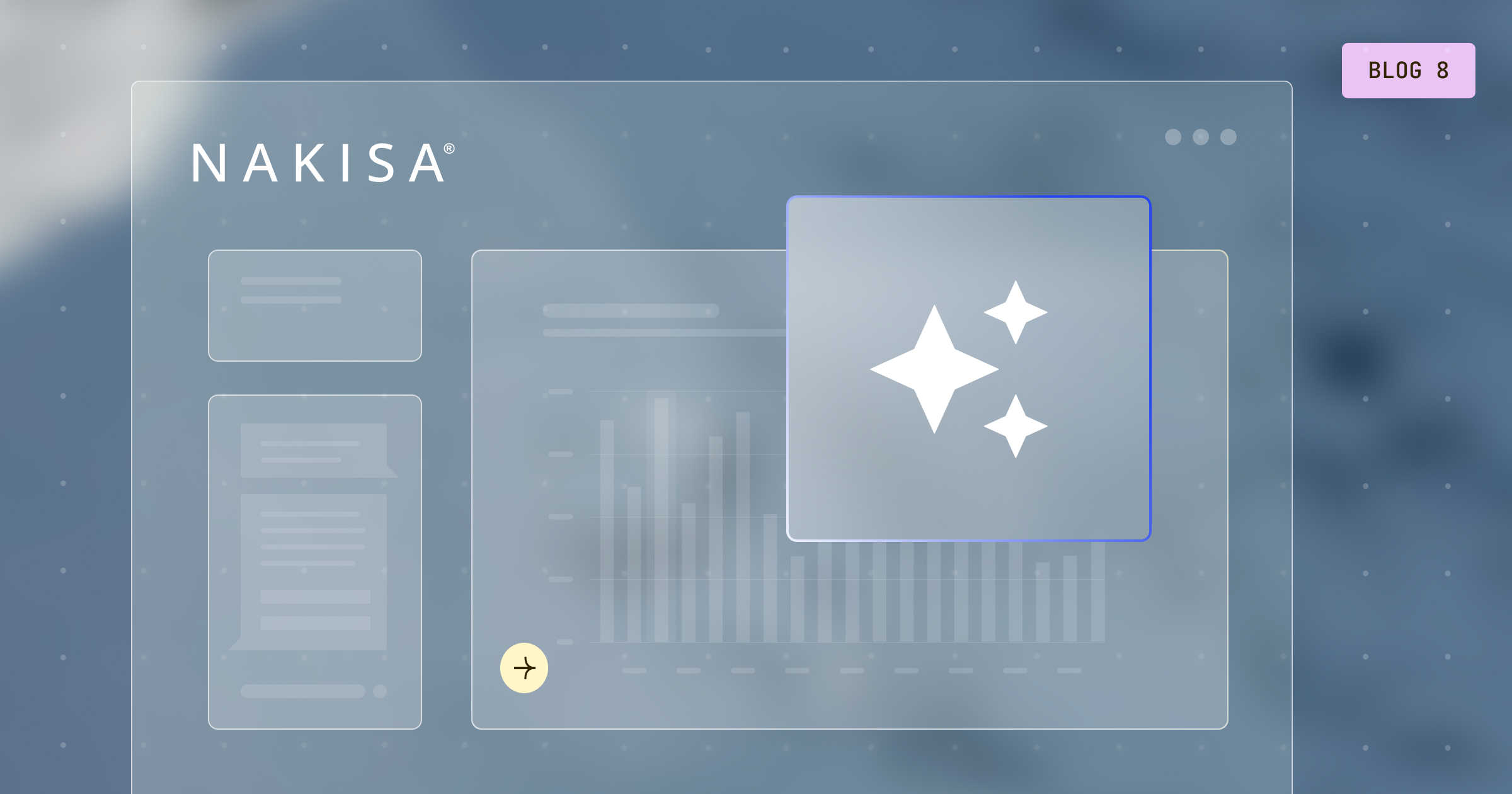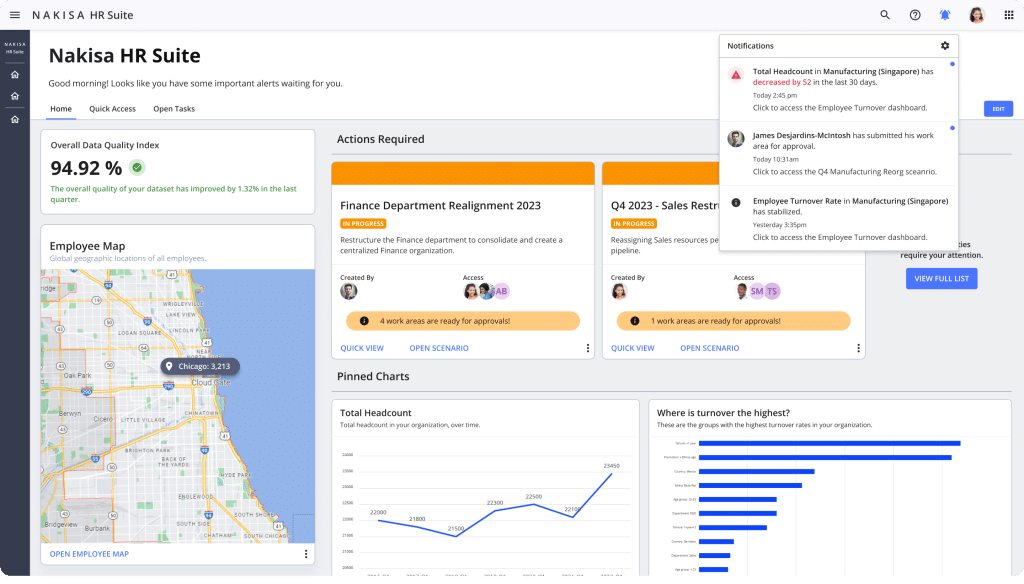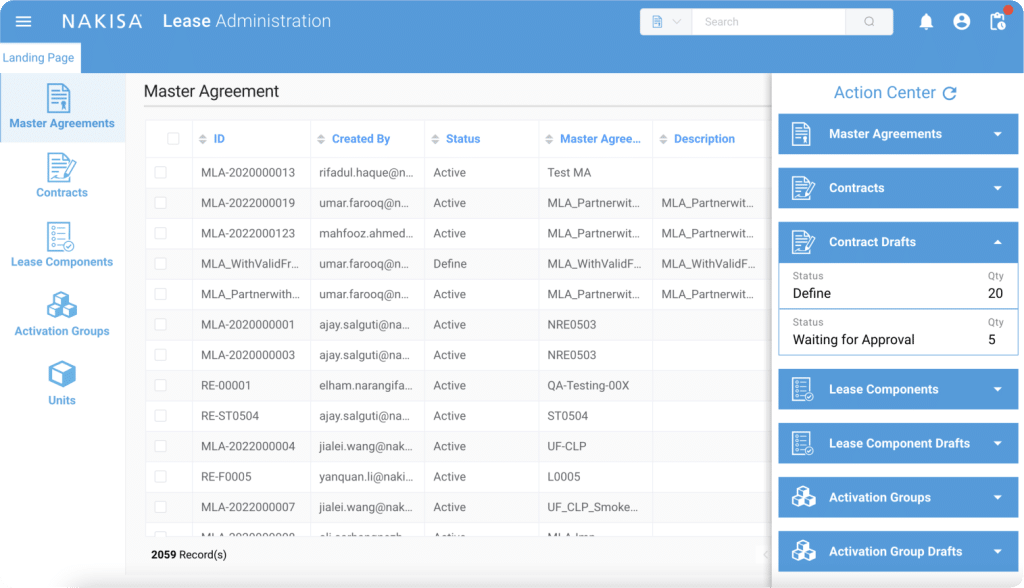Government workforce management has never been more complex. With 40% of federal employees eligible for retirement within the next decade, new digital transformation mandates, and increasing citizen service expectations, government organizations face unprecedented challenges in planning, structuring, and deploying their workforce.
But not every solution is built for the public sector’s unique demands. Platforms purpose-built for organizations with intricate structures, strict regulatory obligations, and large-scale operations, like Nakisa, bring together centralized data, AI-driven analytics and insights, intuitive org modeling, and robust workforce planning tools. They help teams gain clarity, plan, and implement change without compromising on security, compliance, or adaptability across regions, regulations, and departments.
This guide explores the key challenges faced by government organizations, featuring real-world examples, software screenshots, and short how-to videos to help you see what’s possible when government organizations are equipped with the right solution. It is grounded in our deep experience working with federal, provincial, and local government organizations to understand their specific unique needs and deliver solutions that truly support them.
Happy reading!
What unique workforce challenges government organizations face, and how purpose-built org design, workforce planning, and advanced analytics solutions address them
Public sector organizations face unique workforce management challenges that set them apart from the private sector. These stem from multi-layered regulations, high public accountability, and deeply rooted structural complexity. Below are four of the most pressing challenges shaping how federal, provincial, and municipal entities manage, plan, and transform their workforce:
- Digital transformation and legacy system modernization: Government organizations must replace outdated, manual, and paper-based systems, often including siloed mainframes and legacy HR databases, with modern, integrated digital platforms. The transition demands robust data migration and interoperability, strong data governance, and comprehensive workforce insights to drive efficient, data-driven decision-making and ensure compliance through ongoing transformation efforts.
- Regulatory compliance and governance complexity: Government organizations must navigate multiple, overlapping regulations, including DEI mandates, bilingual requirements, accessibility legislation, and union agreements, across federal, provincial, and municipal levels. This demands accurate, real-time visibility into workforce composition, automated compliance tracking, and robust reporting to ensure ongoing adherence and minimize risk.
- Structural complexity and decentralized operations: Federal, provincial, and municipal governments operate with intricate multi-layered hierarchies, shared services, matrix reporting relationships, and hybrid organizational models, combining hierarchical, divisional, and matrix structures. Managers must frequently make organizational changes driven by policy shifts, funding adjustments, or new oversight requirements, making dynamic org design and real-time scenario modeling essential.
- Talent management and succession planning crisis: An aging workforce, lengthy hiring processes, and impending mass retirements create urgent needs for strategic workforce planning, succession management, and knowledge transfer initiatives. Meanwhile, 70% of talent development professionals report a widening skills gap in the government workforce, exacerbated by rapid tech change and competition with the private sector for critical digital, analytical, and technical talent.
Failure to address these challenges can result in service disruptions, compliance violations, and loss of institutional knowledge. To mitigate these risks, public sector organizations require real-time, role-based visibility into workforce data and compliance metrics, automated compliance tracking and audit-ready reporting, and scenario-driven workforce planning to anticipate and proactively address talent gaps, and dynamic org design capabilities to continuously align structures with evolving needs.
In the following sections, we'll explore each of these challenges in depth and show how an advanced, integrated solution, combining workforce planning, org design, org visualization, and advanced HR analytics, can help government organizations overcome them.

Challenge 1: Digital transformation and legacy system modernization
Across all levels of government, the ambition to modernize is clear, but the underlying infrastructure continues to lag behind. Despite years of digital transformation efforts, over 70% of government organizations worldwide still rely on legacy systems for core operations, and nearly half cite data silos and outdated processes as primary barriers to modernization. In Canada, a 2023 audit by the Office of the Auditor General revealed that over 66% of federal IT spending still goes toward maintaining legacy systems, rather than advancing new digital capabilities.
Legacy infrastructure and paper-based workflows
Most government departments operate in complex digital environments shaped by decades of incremental development. Legacy mainframes, custom-built databases, and siloed HR or finance systems still underpin critical processes but rarely interconnect. This leads to fragmented data that must be manually extracted, reconciled, and formatted for every report or analysis, increasing the risk of errors and delays.
The persistence of paper-based workflows compounds the problem: forms are still printed and signed, approvals are physically routed or scanned and emailed, and organizational changes are tracked in spreadsheets with no version control. Even routine updates, such as modifying reporting lines or tracking employee certifications, require multiple disconnected manual steps, making the process error-prone and slow.
Reporting bottleneck and analytical gaps
Public sector teams face constant pressure to deliver comprehensive workforce reports for executives, auditors, unions, equity offices, and program leaders. But the process is labor-intensive, slow, repetitive, and fragile:
- Exporting data from multiple disconnected systems
- Cleaning and consolidating spreadsheets manually
- Chasing down managers for missing or outdated information
- Building one-off reports in Excel or PowerPoint, resulting in static snapshots that are outdated almost immediately
These reports are rarely reusable, and few non-technical users have direct access to the tools or data needed to generate reports independently. As a result, HR analytics or IT teams become bottlenecks, tasked with ad hoc reporting across dozens of departments or programs.
When audits, reorganizations, or executive queries arise, teams scramble to assemble and validate data. Governments can’t keep pace with policy shifts or service demands when critical workforce data is buried in spreadsheets and PDFs. There’s no easy way to access advanced analytics, simulate structural changes, or explore future workforce needs. The result is reactive, and strategic insight is limited by how fast siloed data can be wrangled.
Limited analytical expertise
To make things worse, many government organizations struggle to attract and retain data analysts and scientists, who are in high demand across the private sector. Internal teams may lack the tools or training to conduct sophisticated organizational analysis, further compounding the gap between strategic intent and operational reality.
To break free from this cycle, public sector organizations need a unified, intuitive platform that integrates disparate systems, automates reporting, and empowers all stakeholders with real-time, actionable workforce insights. In the following section, we’ll take a closer look at how Nakisa helps government organizations overcome digital transformation and legacy system modernization challenges.
How Nakisa supports digital transformation and legacy system modernization
Nakisa's AI-powered, enterprise-grade platform provides government organizations with the tools they need to embrace digital transformation. To address these challenges systematically, Nakisa begins every engagement with a structured approach to transformation planning and continues to support organizations throughout implementation and ongoing usage to ensure sustained impact.
Nakisa Value Acceleration Workshop
For over 20 years, we’ve partnered with the world’s largest organizations to solve complex challenges. Backed by our deep domain expertise, consultative mindset, and enterprise-grade technology, Nakisa is a trusted ally for organizations navigating transformation.
The Nakisa Value Acceleration Workshop is a fast, collaborative, and outcome-focused engagement designed to give your team the clarity and confidence to move forward. It includes six interconnected steps that guide you from solution assessment to execution, with Nakisa experts supporting, advising, and co-creating at every stage to ensure measurable success.
The six steps include:
- Current state vs. future state mapping: Co-create optimized workflows by capturing your current reality and designing improvements aligned with your strategic goals.
- Technology stack evaluation: Identify overlaps, inefficiencies, and modernization opportunities by working closely with our IT experts.
- ROI and TCO modeling: Quantify the financial value Nakisa can deliver through detailed return on investment (ROI) and total cost of ownership (TCO) analysis.
- Executive business case development: Build a compelling, executive-ready case with ROI, risk reduction, and transformation alignment to gain stakeholder buy-in.
- Demos, pilots, and PoCs: Validate solutions fit through real-world scenarios and, if desired, hear directly from current Nakisa clients.
- Post-deployment value realization tracking: Track value outcomes against your KPIs to ensure that expected benefits are delivered and sustained over time.
Whether you’re an existing Nakisa client, currently evaluating solutions, or in the early stages of transformation planning, our Value Advisory team would be happy to help assess your systems, processes, and strategic goals, ensuring you have the right tools and foundation for long-term success.
Legacy system integration
Nakisa platform is built to operate seamlessly within complex IT environments typical of government organizations, offering robust support for legacy systems while enabling modernization:
- Flexible integration options: Connect with mainframe systems, legacy databases, and modern cloud applications using APIs, file transfers, and direct database connections.
- Data cleansing and validation: Automatically detect and resolve common legacy data quality issues, such as duplicate, missing fields, and inconsistent formatting.
- Security compliance: Ensure alignment with public sector security and privacy standards through SSO, encryption, role-based access controls, and detailed audit logging.

Integrated platform to replace fragmented legacy and point solutions
Nakisa offers a unified, enterprise-grade platform that consolidates organizational design, workforce planning, org visualization, and analytics into a single, integrated solution. By replacing outdated tools, like OrgPlus, OrgPublisher, and disconnected spreadsheets, government teams gain access to the data and capabilities they need, within a modern, cloud-native platform. This reduces complexity, minimizes vendor sprawl, centralizes and optimizes workflows, streamlines collaboration, and eliminates causes of delayed decisions, rework, and compliance risks.
AI-assisted analytical work
Nakisa's embedded AI and analytics capabilities deliver powerful insights without requiring technical expertise, helping government organizations move from reactive to proactive workforce planning and management:
- Trend analysis: Analyze trends using continuously updated data to uncover workforce trends, emerging risks, and new opportunities
- Trend analysis: Analyze trends using continuously updated data to uncover workforce trends, emerging risks, and new opportunities.
- Easy visualization: With Nakisa’s AI Agent, generate charts and dashboards from single conversational prompt, no SQL or complex reporting required.
- Conversational onboarding: Nakisa AI Assistant enables answers plain-language questions and provides instant guidance, enabling non-technical users to get started quickly with the software.

Digitizing organizational design and workforce planning
Modern workforce transformation begins with how organizations are structured, designed, and planned. Nakisa provides digital-first capabilities that help government teams manage these foundational activities with greater speed, accuracy, and impact.
Real-time, interactive org charts and dashboards: Say goodbye to paper charts or manually updated charts in Excels, PowerPoint, or Vision. Nakisa offers live, interactive org charts that automatically update based on your source systems (e.g., ERPs, HCMs). This ensures leaders gain immediate, accurate visibility into reporting lines, structures, and workforce allocations, without spreadsheets or manual adjustments.
Robust organizational design: Nakisa replaces traditional, manual restructuring exercises with a centralized, interactive, and collaborative platform. Simulate organizational changes, compare scenarios, and instantly assess the impact on your targets, such as headcount, team structures, span of control, DEI metrics, costs, and more. No more back-and-forth across disconnected diagrams or outdated files: everything happens in one centralized, real-time environment.
Future-proof workforce planning: Move beyond fragmented spreadsheets and static planning cycles. Nakisa brings together live data, current vs. future state skill gap analysis, and scenario planning into one intuitive platform. With live data feeding directly into the platform, public sector teams can forecast staffing needs, assess retirement and talent risks, evaluate workforce supply, and align strategy with future service demands, all within an integrated, easy-to-use system.
In the following sections, we’ll dive deeper into each of these capabilities and show how Nakisa supports every stage of workforce transformation, from day-to-day visibility to long-term strategic planning.
Brigín Walsh
Senior Organization Effectiveness Consultant at AIB
Designed for ease of use
Nakisa is built for all users, regardless of their technical skill levels. With an intuitive interface, out-of-the-box and highly configurable reports and dashboards, the platform ensures users at all levels can work productively. Secure, role-based access ensures each user sees the data and capabilities relevant to their role, no more, no less.
Expert onboarding and ongoing client support
We offer structured implementation services and onboarding designed to support deployments in complex enterprise environments. Our approach includes clear project governance and involvement from executive sponsors to help ensure alignment and accountability. Each Nakisa client is supported by a dedicated Client Success Manager and has access to our 24/7/365 support team. We also provide training materials, user guides, and regular sessions and webinars to share best practices and gather feedback on evolving needs.
Through these capabilities, Nakisa enables government organizations to treat workforce data as a strategic asset while meeting public sector requirements. The platform bridges between today’s manual processes with tomorrow’s digital goals, empowering teams to start their transformation journey now and scale over time.
Challenge 2: Regulatory compliance and governance complexity
Government organizations operate under intense and multi-layered regulatory scrutiny. From national to local levels, public sector employers must comply with a complex network of legislation, such as language access mandate, employee equity requirements, accessibility legislation, and union agreements. These frameworks are non-negotiable, directly impacting service delivery, funding, and legal obligations to serve all constituents equitably.
The complexity is heightened by the need to track and demonstrate compliance across multiple dimensions, often within the same department and region. A single agency may be required to show measurable progress on DEI initiatives, maintain bilingual service coverage, meet accessibility standards, and adhere to union rules, all simultaneously. This requires real-time, granular visibility into workforce composition, job classifications, accommodations, language capabilities, and alignment with evolving mandates.
Here’s what that looks like in practice:
- Diversity, equity, and inclusion (DEI): Government organizations must meet representation targets for designated groups including women, Indigenous peoples, persons with disabilities, and visible minorities. These targets must be tracked continuously across all levels of the organization, not just at hiring, but across promotions, leadership succession, and retention.
- Bilingual capacity: In many jurisdictions, service in multiple official languages is mandatory. But this goes beyond basic language fluency. Organizations must ensure bilingual coverage in regional offices, in management, and across specialized roles that require technical or legal terminology.
- Accessibility and accommodation: Accessibility legislation requires employers to proactively identify and remove barriers. This includes tracking employee accommodation needs, ensuring accessible workplaces, and maintaining audit-ready documentation of ongoing compliance.
- Union and collective agreement compliance: Public sector workforces are often highly unionized, with detailed collective agreements governing job classifications, promotions, compensation, and overtime rules. Errors or misalignments can lead to grievances, arbitration, or even legal actions.
Adding to this is structural complexity. A single department may span thousands of employees, dozens of regional offices, and complex reporting relationships, including administrative, functional, and dotted-line roles. For example, an employee might report to a regional director, work under a national manager, and contribute to a cross-functional task force. Tracking all of this in disconnected spreadsheets or static systems creates significant risk.
Compliance isn’t a once-a-year exercise. New DEI targets, language policy changes, or updated accessibility rules must be reflected immediately in organizational structure and workforce decisions. Yet, many public sector organizations still rely on outdated, manual, labor-intensive tools, lacking real-time analytics, limiting their ability to respond proactively. By the time issues surface during audits or reviews, it's often too late to correct them without consequences.
At its core, this challenge comes down to three needs:
- Multi-dimensional compliance tracking across DEI, bilingualism, accessibility, and union obligations, ensuring alignment with public sector mandates
- Real-time visibility into workforce data for informed, risk-aware decision-making
- Audit-ready documentation to demonstrate accountability at every level
To meet this level of complexity, government organizations need dynamic org charts, advanced analytics, and real-time dashboards, tools that provide a true, up-to-date picture of the workforce and enable proactive compliance management. In the following section, we’ll take a closer look at how Nakisa helps government organizations overcome these regulatory compliance and governance complexity challenges with confidence and precision.

How Nakisa addresses regulatory compliance and governance challenges in government
Nakisa provides a centralized platform purpose-built to handle the complexity of regulatory and compliance requirements in the public sector. By unifying workforce data and visualizing organizational structures, complete with embedded compliance metrics, government organizations can maintain regulatory alignment while gaining strategic insight into their workforce composition and service delivery capabilities.
A single source of truth for workforce data
Nakisa integrates seamlessly with leading ERP and HCM systems such as SAP HCM, SAP SuccessFactors, PeopleSoft, Oracle Fusion, Oracle EBS, and Workday and offers robust, platform-agnostic APIs to connect with third-party systems. The platform's enterprise-grade security, designed to meet government standards, ensures compliance with privacy legislation while safeguarding real-time, synchronized workforce data across the organization. Additionally, Nakisa has no data record limits, enabling full organizational visibility and comprehensive historical comparisons to support auditability and long-term strategic planning.
Dave Mawby
Manager, App Support, City of Oshawa
With Nakisa, government organizations can:
- Consolidate workforce data from multiple systems (talent, skills, finance, HR, payroll, employee surveys, and more) into a single source of truth, including headcount, span of control, skills, employee demographics, language capabilities, accessibility accommodations, union affiliations, and more
- Eliminate data quality issues such as duplicate records, missing managers, and inconsistent job classifications, ensuring accurate, reliable workforce data for compliance and planning
- Automate data updates to reduce compliance risks caused by manual errors and delayed reporting, saving time and ensuring up-to-date, audit-ready records
Dynamic org visualization with embedded compliance indicators
Nakisa's org chart software transforms complex government organizational structures into intuitive, interactive visualizations that provide immediate clarity on reporting relationships, compliance status, and service delivery capacity. These charts update dynamically to reflect organizational changes while maintaining historical records to support audits and public reporting.
Government HR teams can:
- Navigate complex multi-level hierarchies with clear visibility into direct reports, dotted-line relationships, and matrix structures
- Visualize bilingual capacity across departments and regions using color-coded indicators for service delivery capabilities, or display custom badges and icons for language skills and qualifications
- Filter organizational views by with custom in-chart metrics and custom filters to adapt to any use case
- Declutter org charts by showing or hiding elements and nodes, highlighting only the records relevant to the current use case (e.g., bilingual employees, employees requiring accessibility accommodations, employees that have certain certifications, etc.)
- Export tailored views as high-quality, presentation-ready org charts for various use cases
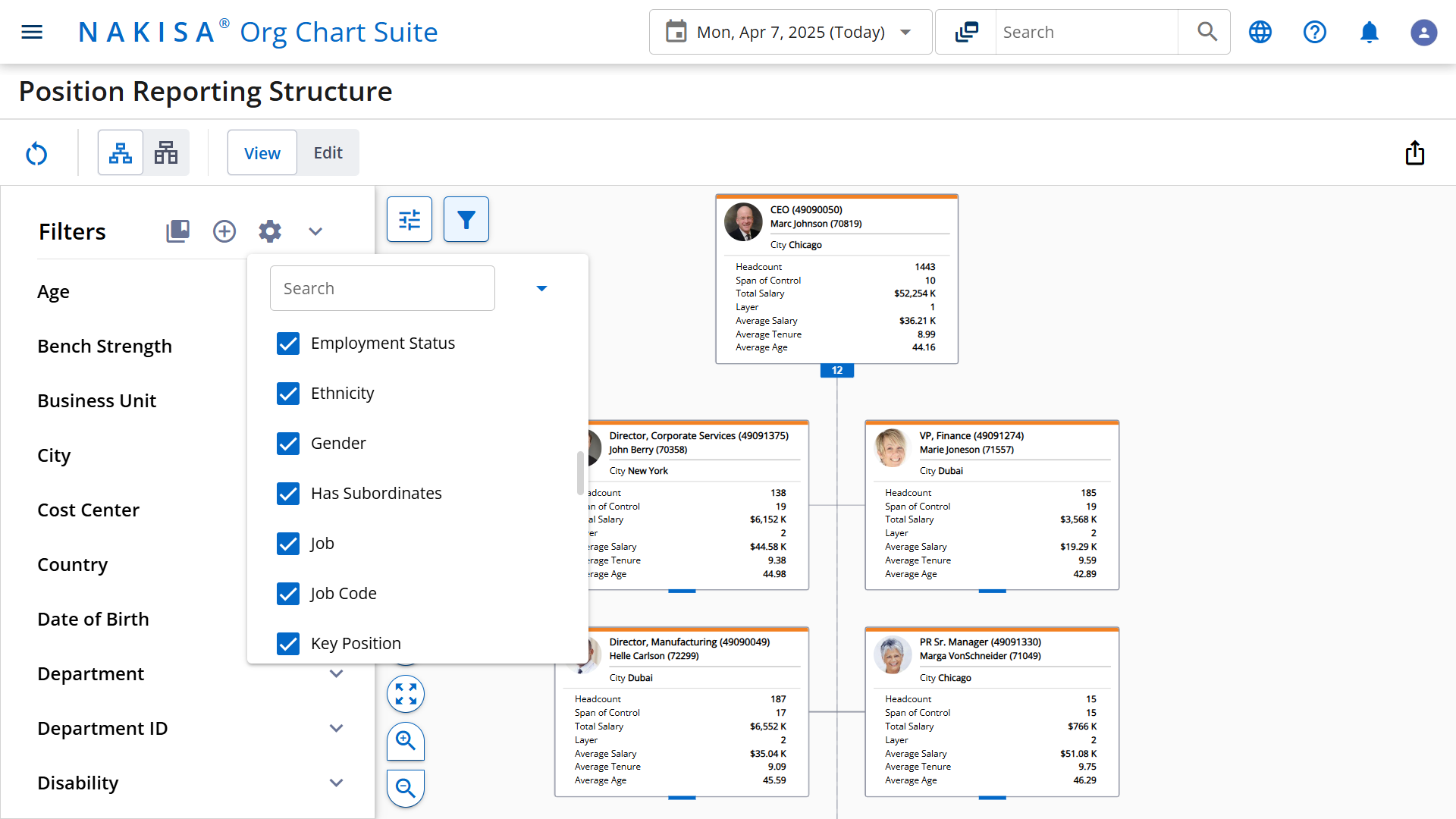
Nakisa’s org chart software allows for a vast selection of filters to slice, dice, and drill down data.
In-chart compliance monitoring
Nakisa embeds key compliance metrics directly within the org chart, enabling HR teams to proactively manage regulatory requirements:
- Highlight DEI representation gaps with visual indicators, like color coding or icons, to identify where additional diversity hiring may be needed
- Display training completion rates at the team or business unit levels for ongoing skills and compliance tracking
- Track security clearance levels and monitor renewal dates for roles involving sensitive information

Nakisa’s org chart software provides advanced in-chart analytics along with custom badges and icons to identify and visually mark compliance risks, certifications, and more.
Historical compliance records
Nakisa provides comprehensive historical tracking capabilities to support government audits and demonstrate long-term compliance efforts:
- Generate point-in-time org charts to visualize workforce composition at any historical date
- Track DEI representation trends over time with built-in analysis and progress reporting tools
- Maintain detailed audit trails for all organizational changes, promotions, and compliance-related decisions
- Support parliamentary inquiries and public accountability requirements with detailed historical documentation
Out-of-the-box and advanced dashboard analytics
Nakisa’s analytics go far beyond basic org charts or static reports. Designed for large organizations with complex structures and dynamic workforce needs, the platform provides real-time, role-based insights into workforce composition, compliance risk, and operational readiness.
Rick Earle
Project Director, The city of Burnaby
With out-of-the-box and configurable dashboards tailored to different departments and leadership roles, government decision-makers can focus on the metrics that matter most to their mandates, whether that’s DEI targets, bilingual service capacity, or succession planning for hard-to-fill roles.
Built-in analytics allow public sector organizations to anticipate workforce disruptions before they affect service delivery. For example,
- Flag regions with high retirement risk in key programs
- Identify teams with expiring certifications or upcoming compliance deadlines
- Visualize key trends in employee demographics, internal mobility, span of control, onboarding and exits, and union-related metrics
- Support DEI compliance tracking by visualizing representation across designated groups and geographies, aligning with employment equity and provincial reporting obligations
- Highlight competency gaps through skills and training dashboards tied to evolving service delivery needs, helping departments make informed decisions on learning and development investments
These insights directly support strategic workforce planning, employment legislation compliance, and equity reporting. All data can be filtered, sorted, and scheduled into repeatable reports, making it easy for non-technical users to track trends, monitor targets, and prepare for audits or leadership reviews, without relying on IT.

Nakisa’s org chart software enables the creation and configuration of multiple dashboards and charts to support DEI initiatives, powered by advanced analytics and filtering options.
AI-powered dashboard creation for every user
Nakisa’s AI Agent for analytics further simplifies dashboard creation and management by generating charts from simple natural language prompts. Any user, regardless of technical expertise, can instantly create tailored charts. The AI assistant also responds to conversational questions and suggests the most relevant dashboards to create based on user needs.

Together, these capabilities transform compliance management from a reactive administrative burden into a proactive strategic advantage. Government organizations can confidently make data-driven decisions about workforce composition, service delivery, and organizational design, while maintaining full compliance with all regulatory requirements.
Michelle Seymore
Head People and Culture Transactional Solutions at Standard Bank Group
Challenge 3: Structural complexity and decentralized operations
Government organizations operate within some of the most complex and layered organizational structures of any industry. At the federal level, departments span multiple provinces and territories with multi-tiered reporting relationships, regional delivery models, and shared service arrangements. Provincial governments manage diverse portfolios from healthcare to education and infrastructure, while municipal entities coordinate across numerous departments like public works, emergency services, and community planning, often in collaboration with both federal and provincial counterparts. This level of structural complexity poses unique and ongoing challenges for organizational design, governance, and day-to-day management.
Unlike private sector companies that can pivot org structures to respond to market shifts or strategic priorities, public organizations must carefully navigate operational efficiency, compliance mandates, legislative constraints, union agreements, and democratic accountability.
These organizational design challenges operate on two distinct but interconnected levels. Strategic organizational design (SOD) focuses on fundamental structural transformation, redesigning reporting relationships, creating new departments, implementing major restructuring initiatives, or aligning organizational architecture with long-term mandates and policy changes. These efforts typically involve senior leadership, require extensive stakeholder consultation, and have lasting implications for service delivery and governance. In contrast, operational organizational design (OOD) addresses immediate, day-to-day structural adjustments that keep government operations running smoothly, redistributing workloads after staff departures, forming temporary project teams, adjusting supervisory spans, or reallocating resources across service channels. While SOD changes may take months or years to implement, OOD adjustments must often be made within days or weeks to maintain service continuity.
These two levels are deeply interconnected: poor operational design capabilities can undermine strategic initiatives, while unclear strategic direction can lead to inefficient operational adjustments. Government organizations need solutions that support both levels seamlessly, enabling tactical flexibility within strategic frameworks while ensuring all changes maintain compliance, accountability, and transparency standards.
Scale and nature of structural complexity
- Federal government complexity: Federal departments such as Employment and Social Development Canada, Service Canada, or Canada Revenue Agency operate across the entire country, managing national policies while adapting programs to local contexts. Their organizational structure typically includes:
- National headquarters responsible for strategy and policy
- Regional offices that tailor federal programs to provincial and territorial needs
- Specialized service delivery units focused on citizen-facing services
- Shared services arrangements with other departments for common functions like IT, HR, or procurement interdepartmental working groups and committees that create matrix reporting relationships
- Provincial government complexity: Provincial governments oversee broad portfolios, including healthcare, education, transportation, and social services. Their organizational structures often mirror federal responsibilities but are adapted to local priorities and conditions. Provincial departments must coordinate internally across diverse sectors while interfacing with both federal and municipal governments, often managing programs funded by multiple levels of government.
- Municipal government complexity: Municipal governments deliver frontline services such as public works, emergency services, planning, and recreation. They operate multiple departments that must collaborate internally and maintain strong working relationships with provincial and federal counterparts for funding, regulatory compliance, and program delivery. Employees may work on initiatives funded and directed by different government levels, adding layers of complexity to reporting and accountability.
The complex and decentralized nature of government organizations creates unique challenges that affect organizational design, management, and service delivery. Let’s explore how this structural reality creates both day-to-day operational hurdles and longer-term strategic design challenges.
Navigating structural layers and matrix management
Matrix reporting is common in public service, where employees often report administratively to a regional lead, functionally to a national program director, and professionally to a discipline-specific expert. They may also participate in intergovernmental task forces or temporary working groups. This multi-layered structure creates overlapping administrative, functional, and dotted-line reporting relationships, along with diverse accountability requirements and varied decision-making authorities.
While essential for service delivery, this complexity is notoriously difficult to document, visualize, and manage, especially with static org charts and disconnected HR tools. Adjusting these relationships during audits, reorganizations, or service reviews becomes a major operational burden and can create ambiguity around accountability, performance measurement, and compliance tracking. Ensuring consistent and effective service delivery requires careful balancing of all these elements.
High-frequency operational changes
Public sector teams frequently face the need to make small-scale, tactical adjustments, like reclassifying roles or adjusting team size, to team structures in response to evolving conditions:
- Redistributing workload after retirements or leaves
- Forming temporary teams for new initiatives
- Adjusting span of control to meet oversight requirements
- Rebalancing staff across service channels (in-person, virtual, or hybrid) based on demand
- Aligning staffing with seasonal or regional service demands
- Coordinating resources across multiple locations or departments
Unlike major restructuring initiatives that undergo extensive planning and approvals, day-to-day operational needs demand that managers and HRBPs make immediate, informed adjustments, while balancing operational efficiency with transparency and oversight. For example, Ontario Power Generation (OPG) conducted over 1,000 annual organizational changes to respond to market changes and new business strategies. These changes are further constrained by strict compliance requirements, including union agreements, segregation-of-duty policies, and audit rules. Even seamlessly simple team adjustments can trigger ripple effects across reporting, budgeting, and compliance systems.
Strategic transformation under constraints
In addition to operational agility, governments must also address structural transformation tied to funding, policy, or mandate changes, including:
- Building org structures for new programs or sunsetting old ones
- Meeting FTE caps, cost-containment goals, or new DEI targets
- Restructuring around citizen-centric service models
- Navigating leadership transitions and ministerial reassignments
These efforts aim to create accountable, adaptable, and compliant structures that allow public institutions to fulfill their evolving mandates. Critically, they must be executed without disrupting service continuity or compromising on transparency, compliance, or equity.
Meeting these demands requires purpose-built tools that empower government teams to plan, simulate, and implement organizational structures with clarity, speed, and confidence.
Change management with public accountability
Transforming structures in the public sector also means navigating a uniquely high-stakes environment. Every decision must consider:
- Legal or policy-based constraints
- Union agreements and collective bargaining timelines
- Transparency in hiring, promotions, and restructuring
- Potential impact on public trust and service equity
- Limited budgets and risk-averse governance culture
These factors require purpose-built tools that support not only scenario planning and structural modeling, but also accountability, audit-readiness, and stakeholder alignment.
Decentralized operations and inconsistent visibility
Government entities often operate in decentralized environments, where different offices, departments, or programs retain control over their local org structures. This leads to challenges such as:
- Inconsistent naming conventions and role definitions
- Difficulty aligning shared services across regions
- Limited visibility into enterprise-wide structure or headcount
- Barriers to standardized reporting and workforce planning
Without a unified org design platform, it's nearly impossible to make informed, coordinated decisions at scale.
The following table illustrates how each of the structural challenges government organizations face requires strategic design capabilities, operational design tools, or both, before we dive into more detail:
| Challenge | Strategic or Operational Org Design | Description |
| Navigating complex structural layers and matrix structures | Both | Requires both strategic framework design and daily navigation tools |
| High-frequency operational changes | Operational org design | Day-to-day adjustments, redistributing workload, seasonal staffing |
| Strategic transformation under constraints | Strategic org design | Major restructuring, new programs, FTE caps, mandate changes |
| Change management with public accountability | Strategic org design | High-stakes transformation requiring stakeholder alignment |
| Decentralized operations and inconsistent visibility | Both | Needs both enterprise-wide standards and local operational flexibility |
Structural challenges faced by government organizations and whether they require operational org, strategic org design, or both.
To navigate these structural challenges, government organizations require real-time visibility into their multi-layered organizational structures, along with the ability to simulate and assess the impact of proposed changes. They need tools that support both top-down strategic design and bottom-up operational adjustments, empowering leaders at all levels to respond quickly and collaboratively. A living, collaborative org chart is essential to reflect the true shape of the organization, not just what’s shown on paper. Modern organizational chart and design solutions like Nakisa’s equip government leaders with insight, agility, and control needed to manage complexity at scale, without compromising compliance, transparency, or service quality. In the next section, we’ll take a closer look at how Nakisa helps government organizations overcome these structural challenges with confidence and precision.
How Nakisa addresses structural complexity and decentralized operations
Nakisa's org design capabilities are tailored to address the layered and regulated nature of public sector environments. The platform provides both operational org design for day-to-day management and strategic org design for large-scale transformations, enabling organizations to respond effectively to evolving mandates, policies, and workforce needs, with one single solution.
Visualization of government complexity
Nakisa's org chart capabilities are specifically designed to handle the multi-dimensional complexity of government organizations. These org scenarios include:
- Multi-level hierarchies: Clear visualization of federal, provincial, and municipal relationships with appropriate security and access controls for sensitive information.
- Matrix relationships: Support for multiple reporting relationships, including administrative, functional, and professional reporting lines with clear visual indicators.
- Temporary structures: Support for temporary assignments, project teams, and working groups.
Operational org design for public sector managers and HRBPs
Nakisa Operational Org Design provides a structured, role-based framework that empowers HRBPs and departmental leaders to make informed organizational adjustments, without depending on central HR. Whether adjusting team structures, rebalancing workloads, or defining spans of control, users can act quickly in response to evolving mandates and operational needs.
Leveraging real-time data from integrated ERP and HCM systems, they can model changes to reporting relationships, team compositions, and position structures. Built-in what-if scenario modeling enables them to simulate organizational changes and instantly assess impact on span of control, workforce costs, DEI representation, union compliance, and more.
For example, when a new government program is launched or decentralized services are introduced in a specific region, local managers can use Nakisa to model proposed changes to team structures and reporting lines directly in the platform. They can immediately verify supervisory ratios, confirm union rules are respected, and evaluate how the new structure aligns with DEI targets or budget constraints.
Once a proposed structure is ready, the collaborative proposal management features allow HR and operational leaders to submit formal staffing proposals for review. Proposals can be shared with senior executives, labor relations, compliance officers, and finance, allowing for real time feedback and streamlined approvals.
A regional director overseeing the rollout of a new public health initiative, for instance, can propose an org setup for new service sites and receive prompt input to ensure alignment with policies, operational goals, and classification requirements.

Nakisa’s org design software enables collaboration with multiple stakeholders in real time.
This collaborative, scenario-based approach accelerates decision-making while ensuring transparency, accountability, and alignment with public sector rules and constraints.
Nakisa's collaborative features enable:
- Real-time stakeholder engagement with HR business partners, senior management, and union representatives
- Structured approval workflows that ensure compliance with government change management requirements and protocols
- Built-in audit trails to capture and document all decision-making steps for compliance and accountability purposes
- Integration with existing systems to support approval chains and administrative processes

In Nakisa’s org design software, all changes are logged in comprehensive change reports, can be tracked and undone before being sent out for approval.
Strategic organizational design for the public sector
Nakisa Strategic Org Design equips public sector leaders and organizational design professionals with robust tools to confidently plan, model, and implement structural changes. Whether reorganizing a department, streamlining reporting lines, managing post-audit structural recommendations, or realigning teams following policy shifts or funding adjustments, Nakisa offers purpose-built capabilities tailored to complex, highly regulated environments. Its intuitive interface enables rapid adoption by internal HR and OD teams without requiring advanced technical skills.
The platform’s scenario modeling functionality supports unlimited what-if simulations in a secure, sandboxed environment. Teams can set structural or headcount targets, such as aligning span of control across ministries, flattening hierarchies following efficiency reviews, or ensuring leadership roles meet bilingual requirements, and instantly see how proposed changes align with organizational objectives.

Nakisa’s org design software enables easy side-by-side comparison of different plans and their KPIs, helping you choose the best one for your organization.
These scenarios support both quantitative goals (e.g. reducing administrative layers or adhering to FTE caps tied to budget cycles) and qualitative mandates (e.g. improving DEI outcomes, ensuring compliance with regional accessibility legislation, or balancing workloads across shared services). For example, when a provincial agency restructures to centralize IT services while maintaining regional HR support, Nakisa helps visualize and analyze these impacts in real time.
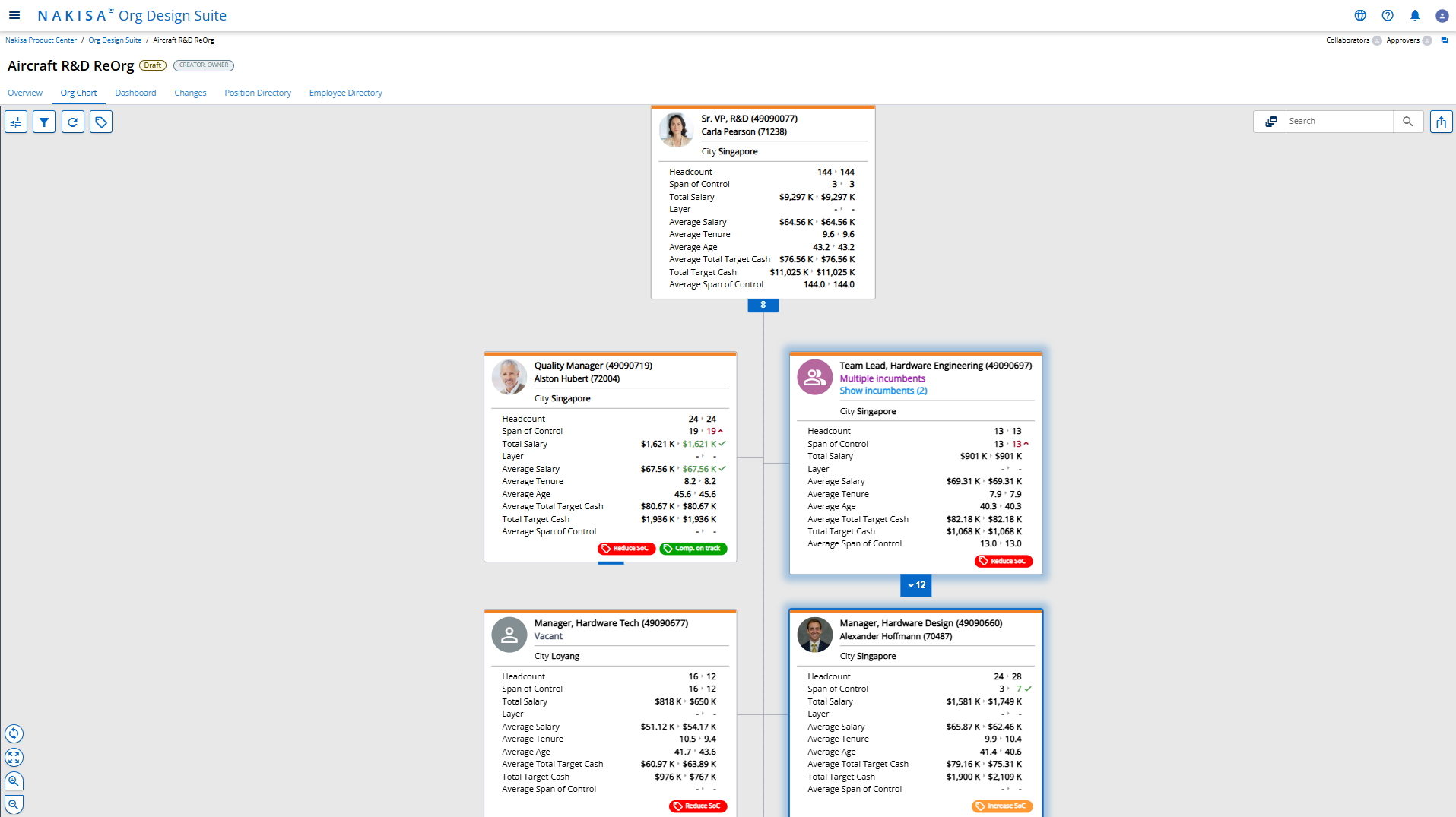
Nakisa’s strategic org design software allows for custom tagging, target setting, and KPI before and after comparisons when modeling sandbox scenarios.
Unlike other vendors, Nakisa imposes no limits on the number of employee records used in org design activities. Users can upload all data at once for a comprehensive view and scenario comparisons, eliminating inefficiencies caused by smaller batch uploads.
The platform makes it simple to create, edit, move, delimit, or delete positions and employees, including reporting lines (double-dotted or dotted lines), a critical feature for the public sector. Bulk actions and automation save time and streamline processes by allowing users to edit, move, normalize, and compare records in bulk. This is particularly valuable when applying structural updates across regional offices, consolidating shared service units, or aligning job classifications following a departmental reorganization or audit recommendation. These changes are automatically logged, with change reports summarizing all updates within each scenario.
For large-scale transformation initiatives, Nakisa allows work to be divided into smaller work areas with assigned owners, ideal for coordinating across departments, jurisdictions, or functional areas during reorganizations. For example, during a government-wide restructuring or after a service delivery review, responsibilities can be distributed by ministry, region, or function (e.g., policy, operations, finance, citizen services). Built-in collaboration tools such as integrated chat, task assignment, and approval workflows ensure alignment between central HR teams, departmental leaders, and other stakeholders. Org charts can also be exported for offline review with executive teams or union representatives.

With seamless bidirectional integration to major public sector systems like SAP HCM, SAP SuccessFactors, Oracle Fusion, Oracle EBS, PeopleSoft, Workday, and others, plus a robust API framework, Nakisa ensures that organizational modeling is always based on real-time, up-to-date workforce data. This is especially important in the public sector, where organizational changes, whether driven by policy shifts, program restructuring, or leadership transitions, must reflect current staffing and reporting relationships with precision.
Arief Setiawan
Deputy VP HR Operations at Sinarmas
Critical processes such as data synchronization, error detection, reporting, and system writebacks are automated to reduce manual effort and ensure consistency. The sync check process automatically detects discrepancies between proposed scenarios and live system data, helping teams catch missing roles, broken hierarchies, or outdated structures before they’re approved. Predefined validation rules can be applied to scenarios, flagging issues like unassigned positions, orphan nodes, or span-of-control violations to ensure compliance with internal policies or collective agreements.

Nakisa also provides robust role-based access controls so different users, whether branch managers, central HR, or departmental analysts, can only access what’s relevant to their role. This is critical for maintaining confidentiality during sensitive projects like leadership realignments, mandate reassignments, or workforce reductions. The result is a secure, collaborative, and accountable org design, even in highly complex and politically sensitive environments.
Claudia Leavens
Manager, Org Design and Job Evaluation at OPG
Government-grade security and compliance
Nakisa's platform incorporates enterprise-grade security measures that meet the demands of highly regulated sectors, including government:
- SSO and role-based access control aligned with government security classifications
- Geographic data boundaries compliant with privacy legislation and data sovereignty requirements
- Comprehensive audit logging meeting government accountability standards
- SOC 1 and SOC 2 Type II certified and FIPS-140-2, with annual third-party audits verifying controls for security, availability, processing integrity, confidentiality, and privacy
- GDPR-ready and compliant with major global privacy frameworks
- ISO 27001 and ISO 27017 certified, ensuring robust information security management and cloud security practices in line with international standards
- Integration with government identity management systems and security protocols
The platform enables government organizations to maintain the complex organizational structures required for democratic accountability while providing the flexibility needed for effective service delivery. By supporting both strategic transformation and operational adjustment, Nakisa helps government entities balance stability with agility in their organizational design.
Challenge 4: Strategic and operational workforce planning challenges
Government organizations face an unprecedented workforce challenge that threatens the continuity of public service delivery and the preservation of institutional knowledge. A convergence of demographic trends, rigid hiring processes, and evolving skill requirements has created a perfect storm in public sector talent management. Unlike private sector organizations that can adapt quickly to market conditions, government entities must navigate complex regulatory frameworks while addressing urgent succession planning needs.
Government organizations face workforce planning challenges that operate on two distinct but interconnected levels. Strategic workforce planning (SWP) focuses on long-term talent pipeline development, succession planning, knowledge transfer, and capability building to meet future organizational needs. Operational workforce planning (OWP) addresses immediate staffing adjustments, resource reallocation, and day-to-day workforce management to maintain service delivery. While SWP initiatives may span years, OWP decisions must often be made within days or weeks to address urgent staffing gaps or service demands.
Strategic workforce planning challenges
The demographic cliff
The public sector workforce is aging rapidly, with a significant portion of employees approaching retirement eligibility. Over 15% of the USA’s, and 21% of Canada’s working-age population is now aged 55-64, the highest level on record and a key factor behind labor shortages across industries. In the federal government alone, over 40% of employees will be eligible for retirement within the next five years. This demographic shift is particularly pronounced in senior management positions, where institutional knowledge and decision-making expertise are concentrated.
But the challenge is not simply replacing headcount. Many public sector roles require deep, specialized knowledge of programs, regulations, and operational procedures that take years to develop. When experienced employees retire, they often take with them critical know-how, from policy execution to stakeholder management and operational nuances that is difficult to easily transfer or document.
Lengthy and rigid hiring processes
While designed to ensure fairness and transparency, government hiring processes are often lengthy and cumbersome. The typical recruitment cycle can take 6 to12 months from job posting to appointment. During this time:
- Qualified candidates may accept offers elsewhere
- Vacant positions may disrupt service delivery
- Remaining staff may be overburdened with additional responsibilities
- Critical projects can be delayed or cancelled
This timeline poses a particular challenge for succession planning, as the hiring and onboarding process exceeds the notice period given by retiring employees.
Skills gaps in digital transformation
Government organizations are in the midst of widespread digital transformation, shifting from manual, paper-based workflows to digital service delivery. In fact, over 86% of public sector organizations expect technologies, particularly AI, to significantly drive reshape their workforce.
However, these changes require new digital competencies that many current employees lack, including:
- Digital service design and user experience
- Data analytics and performance measurement
- Cybersecurity and privacy protection
- Agile project management and iterative development
- Cloud computing and modern IT infrastructure
At the same time, government agencies must compete with private sector employers who often offer more attractive compensation and more flexible working arrangements for these high-demand skills.
Knowledge transfer challenges
Government organizations have historically relied on informal knowledge transfer methods, including mentoring, and on-the-job learning. However, the scale and pace of retirements make these traditional approaches insufficient.
Critical knowledge areas at risk include:
- Policy development and implementation
- Stakeholder relationship management
- Regulatory compliance and audit procedures
- Program design and delivery
- Institutional memory of past decisions and outcomes
Without robust knowledge transfer mechanisms, these critical capabilities are at risk of being lost.
Limited internal mobility
Government job classification systems and union agreements, while designed to protect fairness, often limit internal mobility. This restricts employees’ opportunities to gain diverse experience and develop their leadership capabilities.
The effects include:
- Narrow skill development within rigid job classifications
- Fewer viable candidates for specialized leadership roles
- Lower employee engagement and retention
- Reduced organizational agility in responding to shifting priorities
Budget constraints and resource limitations
Finally, succession planning efforts are often constrained by tight budgets and limited resources. Investments in training, leadership development, and knowledge transfer are often among the first to be cut during budget pressures, creating a cycle where succession planning becomes more difficult over time.
Operational workforce planning challenges
While long-term succession planning focuses on leadership pipelines and future skill development, government organizations also face immediate, day-to-day workforce challenges that require rapid response and tactical flexibility.
Seasonal service demand fluctuations
Government services experience predictable peaks tied to fiscal cycles (tax season), education (school-year schedules), elections, and program-specific intake periods. These fluctuations create immediate staffing pressures that require careful resource planning and reallocation. For example, tax agencies must rapidly scale up customer service capacity during filing season, while education departments face peak workloads during school registration periods. Unlike private sector organizations that can rely on temporary staffing, government agencies must navigate union agreements, security clearances, and training requirements that limit their ability to quickly adjust workforce levels.
Unplanned vacancy management
Unanticipated retirements, resignations, medical leaves, and other departures can cause immediate staffing gaps, especially in frontline and essential services. When a regional manager leaves suddenly, or when multiple employees in a specialized unit take extended leave, government organizations must quickly redistribute workloads and maintain service levels. These situations require immediate workforce adjustments that can't wait for lengthy hiring processes or formal reorganization procedures.
Program expansions or contractions
Governments frequently introduce or sunset programs based on changing mandates, political priorities, or funding availability. New immigration programs, emergency response initiatives, or digital service offerings require immediate workforce deployment, while program cuts or consolidations demand rapid staff reassignment. These changes often happen with little advance notice, requiring operational workforce planning tools that can quickly model staffing scenarios and implement changes without disrupting ongoing services.
Budget-driven workforce adjustments
Mid-year budget cuts, hiring freezes, or shifting financial priorities often lead to short-term adjustments in headcount allocation. Government organizations must frequently reallocate staff from lower-priority areas to critical services, manage overtime budgets during peak periods, or redistribute resources across regions based on changing funding formulas. These operational decisions require real-time visibility into workforce costs, capacity, and service delivery requirements.
Policy or regulatory shifts
New policies, regulatory changes, or compliance requirements can create immediate needs to reallocate headcount and expertise. Healthcare reforms may require rapid deployment of specialized staff, new accessibility legislation might demand immediate compliance team expansion, or emergency declarations can trigger workforce mobilization across multiple departments. These shifts require operational agility to quickly assess current capacity, identify skill gaps, and redeploy resources to meet new requirements.
The operational workforce planning challenge is compounded by the interconnected nature of government services. Unlike private sector organizations with clear departmental boundaries, government agencies must coordinate staffing decisions across multiple levels of government, shared services arrangements, and inter-departmental programs. A staffing change in one area can have cascading effects on service delivery, compliance, and operational effectiveness across the entire organization.
Hybrid workforce planning challenges
Several workforce planning challenges require both strategic foresight and operational agility. Budget-driven adjustments, for instance, demand long-term financial planning while requiring immediate tactical responses to funding changes. Skills gaps in digital transformation require strategic capability building through training and recruitment, but also operational flexibility to redeploy existing staff and adjust team structures as new technologies are implemented.
Government organizations need integrated workforce planning solutions that support both time horizons seamlessly, enabling tactical flexibility within strategic frameworks while ensuring all changes maintain compliance, accountability, and service delivery standards.
The following table illustrates how each workforce planning challenge requires strategic planning capabilities, operational planning tools, or both:
| Challenge | Strategic or Operational Workforce Planning | Description |
| Demographic cliff and mass retirements | Strategic | Long-term succession planning and ageing workforce |
| Lengthy hiring process | Both | Both strategic pipeline planning and immediate vacancy coverage |
| Skill gaps in digital transformation | Both | Both long-term capability building and immediate skill reallocation |
| Seasonal service demand fluctuations | Operational | Real-time staffing adjustments, resource reallocation |
| Unplanned vacancy management | Operational | Immediate coverage, workload redistribution |
| Budget-driven workforce adjustments | Both | Both strategic headcount planning and tactical reallocation |
| Policy/regulatory shifts | Both | Both long-term compliance planning and immediate team restructuring |
| Knowledge transfer challenges | Strategic | Institutional memory preservation, mentoring programs |
| Limited internal mobility | Both | Both career pathway development and immediate assignment flexibility |
In the following section, we explore how Nakisa supports government organizations in addressing both operational and strategic workforce planning needs.
How Nakisa addresses strategic and operational workforce planning challenges in government
Government workforce planning often spans both long-term transformation and short-term agility. Nakisa’s integrated workforce planning platform supports both strategic and operational workforce planning (SWP and OWP), helping public sector organizations proactively address succession risks while responding quickly to staffing shifts.
Strategic workforce planning for long-term success
Nakisa’s strategic workforce planning solution enables data-driven decisions about talent development, knowledge transfer, and workforce sustainability. At its core there is a guided workflow structured around six key steps.
01 - Time horizon and cluster selection
Using the platform, you can define the planning timeline (short, medium, or long-term) and select relevant organizational dimensions such as departments, job families, or regions as you begin your plan.
02 - Comprehensive current state assessment
Nakisa allows you to evaluate your current workforce using the 5C framework to ensure your government organization is not only staffed appropriately, but also structured, skilled, and financially aligned to achieve your strategic objectives:
- Capacity measures the organization’s ability to meet service delivery needs and operational requirements with available talent, assessing headcount, workload, and productivity to identify where more resources are needed or where optimization is possible.
- Cost evaluates current workforce costs including salaries, benefits, pension obligations, recruitment, onboarding, training, and related workforce investments. This analysis helps government organizations make informed decisions about resource allocation and budget planning.
- Capabilities link job roles and employee skills to a comprehensive skill taxonomy that includes both traditional government competencies and emerging digital skills. This assessment reveals gaps in critical capabilities and identifies opportunities for targeted development.
- Composition examines workforce structure and diversity, including roles, functions, age distribution, tenure patterns, demographics, and employment types. This analysis ensures the right mix of talent to meet goals and is crucial for understanding retirement patterns and succession planning needs.
- Configuration analyzes how the workforce is organized, including organizational structures, reporting relationships, span of control, layers, and geographic distribution. This review identifies potential structural issues that may impact collaboration, responsiveness, and succession planning effectiveness.

Nakisa’s strategic workforce planning software enables efficient assessment of your organization’s current resource state.
03 - Future state modeling
Nakisa then supports future state workforce analysis by leveraging AI-driven modeling and predictive analytics to forecast supply, market, and demand drivers. The platform consolidates data from multiple sources and enables planners to incorporate both automated insights and manual inputs for a comprehensive outlook. Common drivers include:
Supply drivers: Internal factors, such as:
- Retirement rates and age distribution of critical roles, such as frontline staff or senior administrators
- Employee turnover and internal mobility across departments or regions
- Throughput and delays in internal training, certification, and professional development programs
Market drivers: External factors, such as:
- Availability of qualified talent in expanding service areas or underserved communities
- Hiring activity and wage trends in competing public agencies or private sector partners
- Regulatory changes impacting licensing, security clearances, or mandatory certifications
- Regional unemployment rates that influence applicant volume and competition for roles
- Inflationary pressures affecting compensation expectations, benefits, and workforce retention
Demand drivers: Internal factors such as:
- Launch of new programs, services, or policy initiatives requiring specific skill sets
- Opening of new service centers, regional offices, or community outreach locations
- Long-term shifts in service delivery models, such as increased digitalization or outsourcing of non-core functions
04 – Current vs. future state gap analysis
Through dynamic gap analysis using the 5C categories discussed above (capacity, cost, capabilities, composition, and configuration), Nakisa enables organizations to compare current and future workforce states, identifying misalignments that could impact service delivery or program goals. For example, the platform can reveal upcoming shortages of licensed social workers in high-demand regions, gaps in certified IT security specialists critical to digital services or staffing imbalances in social services teams. It can also highlight areas such as underrepresentation of bilingual staff in community outreach programs, succession planning gaps in leadership roles, and missing competencies in emerging policy areas like climate adaptation or digital government transformation.
These insights are presented through intuitive dashboards with clear year-over-year comparisons and side-by-side views across departments and regions. This level of transparency empowers government leaders to act early, proactively developing talent pipelines, addressing critical workforce gaps, and ensuring continuity of essential public services.
05 - Scenario creation and selection
Nakisa supports scenario planning through the 6B framework, enabling public sector organizations to develop, evaluate, and compare multiple workforce strategies and their trade-offs. This approach helps close the supply-demand gap and identify the most effective combination of “B” strategies to meet operational requirements and align with strategic objectives.
Scenarios include:
- Buy: Recruit new talent, such as specialized policy experts, to fill urgent gaps.
- Build: Invest in internal training and professional development programs to grow capabilities, like digital literacy or leadership skills.
- Bot: Automate repetitive tasks to improve efficiency and free staff for higher-value work.
- Borrow: Leverage partnerships, temporary staffing arrangements, or inter-agency secondments to access needed skills without permanent hires.
- Bind: Implement retention initiatives to keep critical employees engaged and reduce turnover.
- Bounce: Reassess and reallocate or phase out roles that no longer align with organizational priorities or funding constraints.
By modeling and comparing these scenarios, Nakisa helps government organizations choose strategies that best balance cost, capacity, and capabilities, while maintaining compliance and supporting long-term public service sustainability.

Nakisa’s strategic workforce planning software enables easy scenario creation to explore and apply the right 6B strategies for closing workforce gaps.
06 - Ongoing scenario tracking
After implementation, monitor selected scenarios over time and adjust plans based on actual outcomes. Depending on your internal processes, this is the stage where you can initiate operational or strategic organizational design and begin operational workforce planning.
Operational workforce planning for day-to-day agility
For more operational, day-to-day activities, Nakisa’s operational workforce -planning software provides government organizations with a centralized, intelligent platform to manage workforce shifts with speed, accuracy, and compliance.
Public sector workforce planners gain full visibility into staffing needs across departments, programs, and service areas. With flexible monthly or seasonal planning, teams can model and adjust staffing levels based on service demand peaks, program lifecycles, and funding changes. The platform supports detailed subplans by location, role type, or program, helping public agencies allocate resources effectively while staying compliant with labor regulations, classification frameworks, and union agreements.
To provide a unified view of organizational structures, Nakisa Operational Workforce Planning seamlessly integrates with Nakisa Org Chart. This integration automatically identifies and visualizes vacancies to streamline recruitment planning. You can easily add new items to headcount plans for further flexibility in addressing workforce needs.

Nakisa’s built-in analytics track staffing trends across regions and functions, compare actual headcounts against plans, and support informed, data-driven decision-making. The conversational AI assistant further simplifies planning by analyzing HR data, proposing adjustments, tracking approvals, and enabling headcount planning through simple, natural language prompts, reducing complexity and saving time.

The platform fosters collaborative planning across departments like HR, operations, finance, and program management. Role-based access and configurable workflows help agencies stay aligned with policy guidelines, while remaining flexible to adjust staffing based on shifting service demands. Automated alerts and status tracking improve coordination and cut down on approval bottlenecks.
Bidirectional integration with core HCM and ERP systems (such as SAP, Oracle, PeopleSoft, and Workday) brings workforce data into a single, real-time planning environment. This keeps workforce plans in sync with actual employee availability, qualifications, and budget allocations.
With Nakisa’s operational workforce planning capabilities, government organizations can ensure the right people are in the right roles at the right time, without overspending or disrupting service delivery. The platform builds agility and resilience into short-term workforce planning, supporting continuity and responsiveness across the public sector.
Elouise Brown
Sr. Director, HR Systems and Technology at Comcast
Together, Nakisa’s strategic and operational workforce planning solutions enable governments to tackle both long-term succession risks and short-term staffing pressures, ensuring services continuity while building a future-ready public sector workforce.

Conclusion: empowering government organizations with AI-driven org design, workforce planning, and analytics software
As highlighted throughout this guide, government organizations operate in an incredibly complex environment. From navigating multi-layered compliance requirements and managing decentralized teams to responding to policy shifts, funding cycles, and demographic changes, government HR and operations leaders must balance agility with accountability, all while continuing to deliver high-quality services to citizens.
This is where the Nakisa Workforce Planning Portfolio delivers meaningful impact. Designed to meet the needs of large, regulated organizations, Nakisa brings together org chart visualization and analytics, strategic and operational org design, and strategic and operational workforce planning into one integrated platform. Whether you're managing a large federal agency, a provincial department, or a municipal workforce, Nakisa helps ensure the right people are in the right roles at the right time.
With its cloud-native, AI-powered tools, Nakisa enables governments to centralize and streamline workforce operations while supporting a proactive workforce strategy that anticipates change and aligns with service delivery goals. From real-time views of complex organizational structures and reporting lines to advanced analytics for succession planning, talent forecasting, and cost modeling, the platform turns static data into strategic insight. Automated workflows, secure collaboration tools, and configurable dashboards support proactive planning, helping public sector organizations respond quickly to change, maintain compliance, and meet their service delivery mandates.
Nakisa is trusted by government organizations and Fortune 1000 companies alike. To see how it can support your organization’s goals, get a personalized demo of the platform, and discover how better visibility, planning, and collaboration can help you plan confidently, collaborate and implement securely, and lead with insights.


